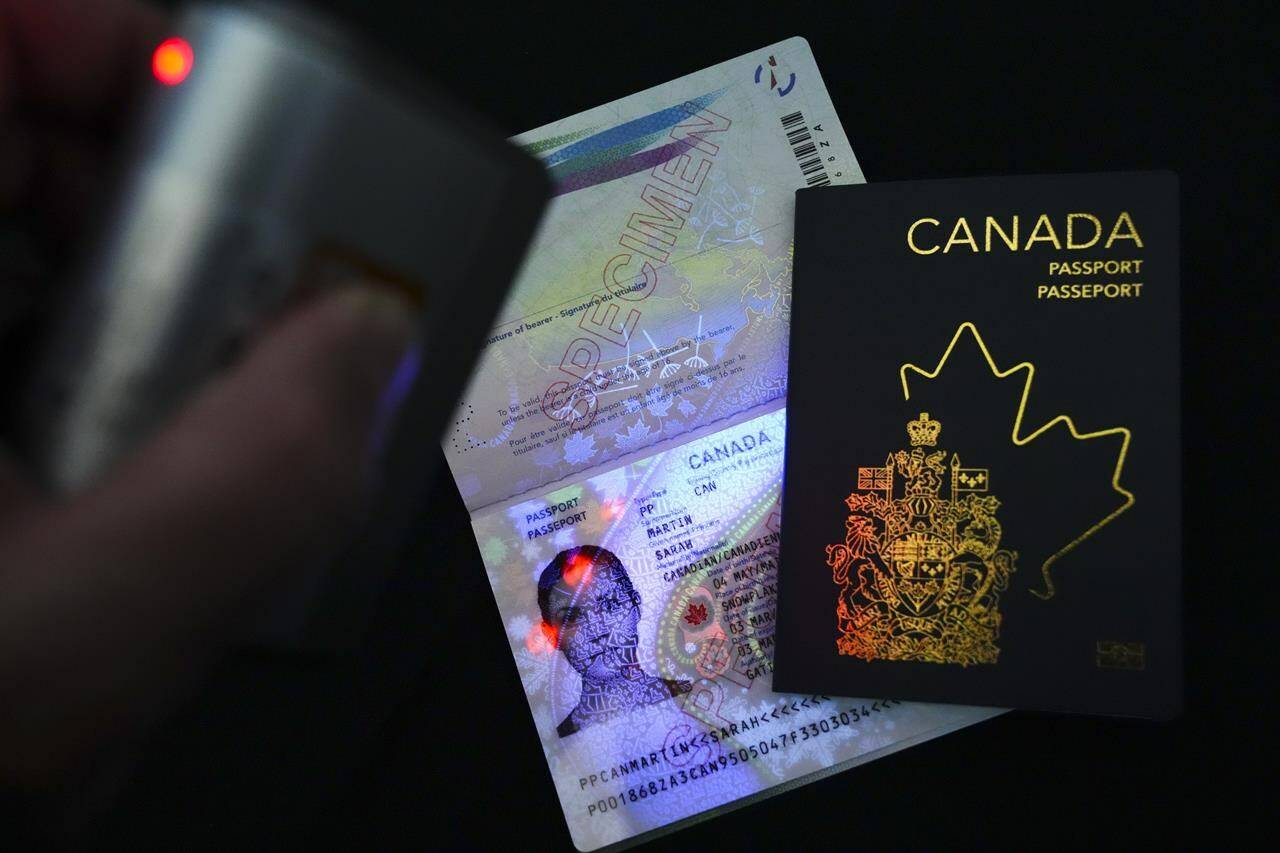The government hit delete on Terry Fox.
That’s how Conservative Leader Pierre Poilievre put it when he posted a nearly five-minute video on Twitter condemning the Liberal government for its passport redesign, while standing in front of the National War Memorial, another image removed from future Canadian passports.
That video, which calls the passport Prime Minister Justin Trudeau’s “colouring book” because it features images of a squirrel eating a nut and a man raking leaves, reached nearly a million people in a week, far exceeding Poilievre’s other recent videos.
“This is troll politics,” said Jason Hannon, an associate professor at the University of Winnipeg in the department of rhetoric, writing and communications.
“It’s not like Canadian identity has ever hinged on passport design. It’s not like Canadians ever went to bed at night thinking happy thoughts about passports. It’s an utterly fabricated issue.”
The Liberals aren’t the first to “delete” marketing, branding or advertising work done by previous governments, said Alex Marland, a professor of political science at Memorial University of Newfoundland who studies political marketing.
“The reality is that all governments do these things and shape countries in their own image whenever they can,” he said.
“The general pattern is the Liberal party tends to take Canada in a more independent direction, and Conservatives tend to take Canada in a more historical direction, in a history as they perceive it.”
Marland said a specific portrait of Queen Elizabeth II would hang in the foreign affairs office when Conservatives were in power, and be replaced with artwork by a Quebec artist when the Liberals took office.
Then there was former prime minister Stephen Harper, who repainted the government plane red, white and blue with “True North Strong and Free” written on it, and put “royal” back into the names of the Royal Canadian Air Force and Royal Canadian Navy.
The Liberals have been involved in changing the coat of arms, the national anthem and the Canadian flag to the current versions.
While it’s not new for politicians to attack government decisions, Poilievre has framed the passport redesign as a culture war issue, suggesting that Canadian history, identity, values and iconic figures are at stake, said Hannon, who’s writing a book on the topic.
Hannon said a culture war is a battle for the heart and soul of a nation. The notion exploded in Canada during the COVID-19 pandemic with the politicization of masks and vaccines.
“It’s a struggle to define what we stand for, what we should be striving for. It’s a struggle over what it means to belong to this or that country, over what it means to be Canadian, who we are and who we’re not,” Hannon said.
“So if you can control that conversation, you can wield considerable political power.”
Hannon said this can lead to a harmful and toxic culture, like what has been seen in the United States in recent years.
“It’s severely corrosive to the culture of democracy because it elevates these fake issues over real and substantive issues,” he said.
“Unfortunately, when you don’t have a meaningful political vision for a better society — when you can’t actually say what it is that you want for Canada other than vague ideas and meaningless talk about ‘freedom’ — then you stoke fear and outrage and hatred.”
He said if politicians are successful in stoking that fear, they can “bring people who would ordinarily never talk to each other … in a kind of unison, shouting against the enemy.”
But given that the next government can bring in its own redesign, some say the outrage is overblown.
“These things are not forever. We’re not redesigning our Parliament buildings that will be built for 100 years,” said David Soberman, a professor of marketing at the University of Toronto.
—Mickey Djuric, The Canadian Press
READ MORE: Canadians can apply to renew their passports online beginning this fall

